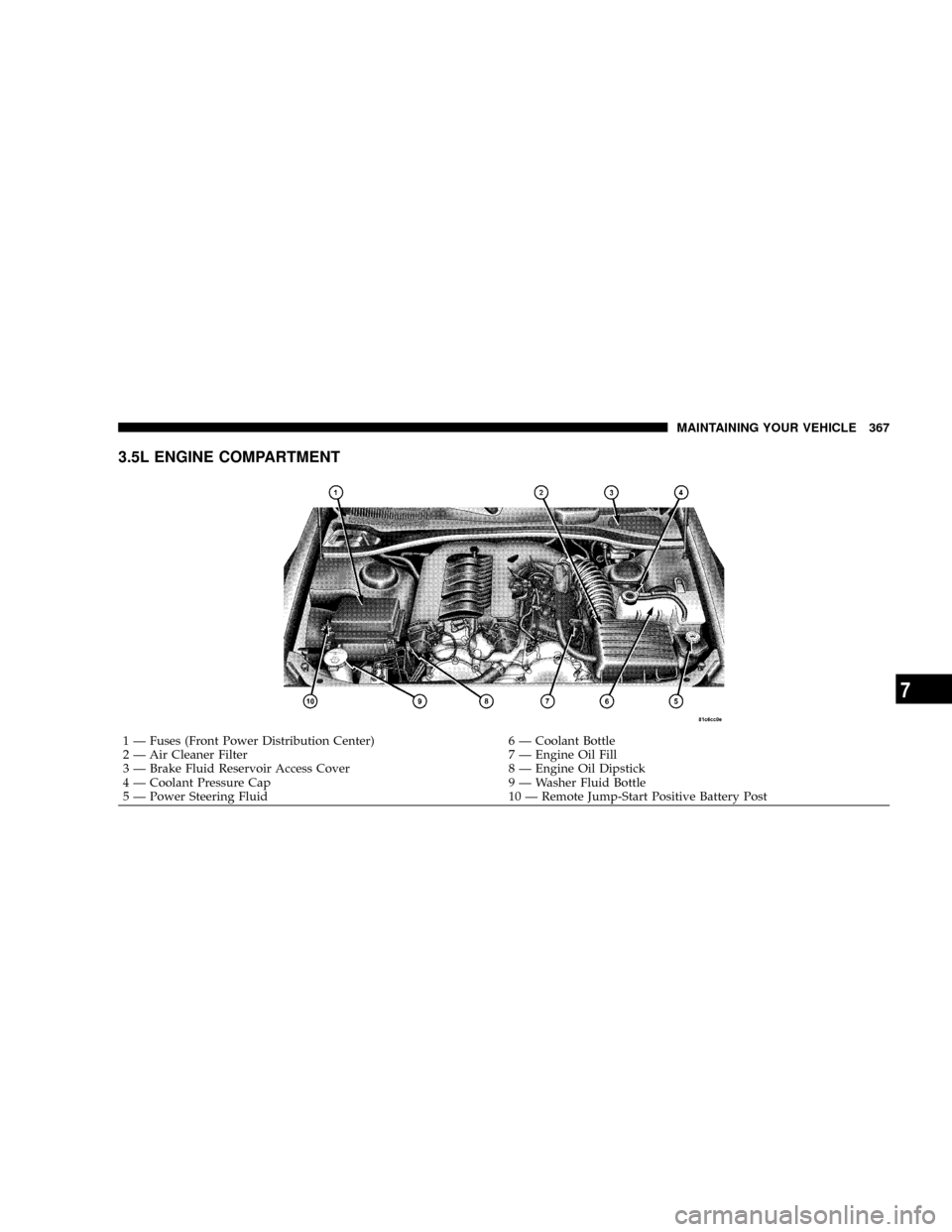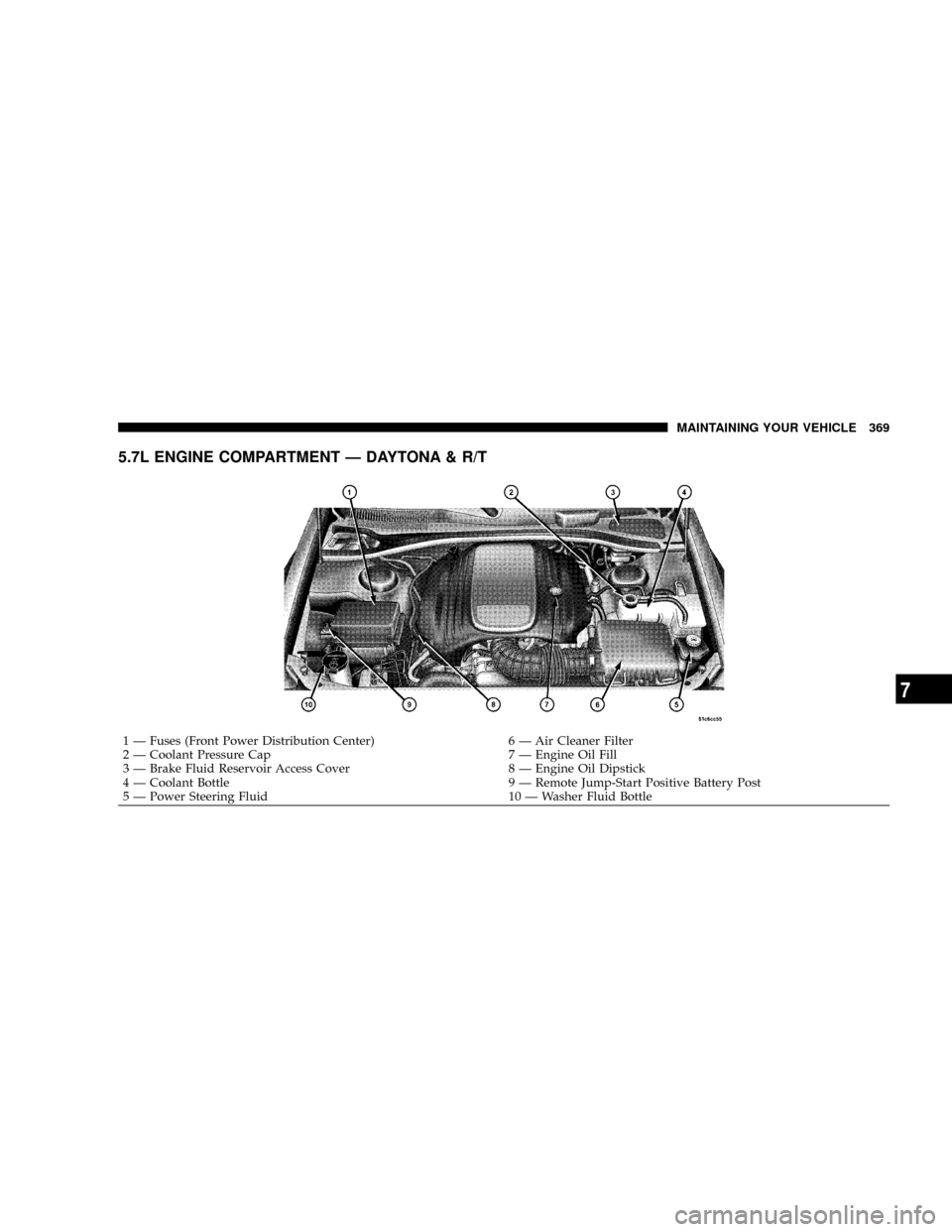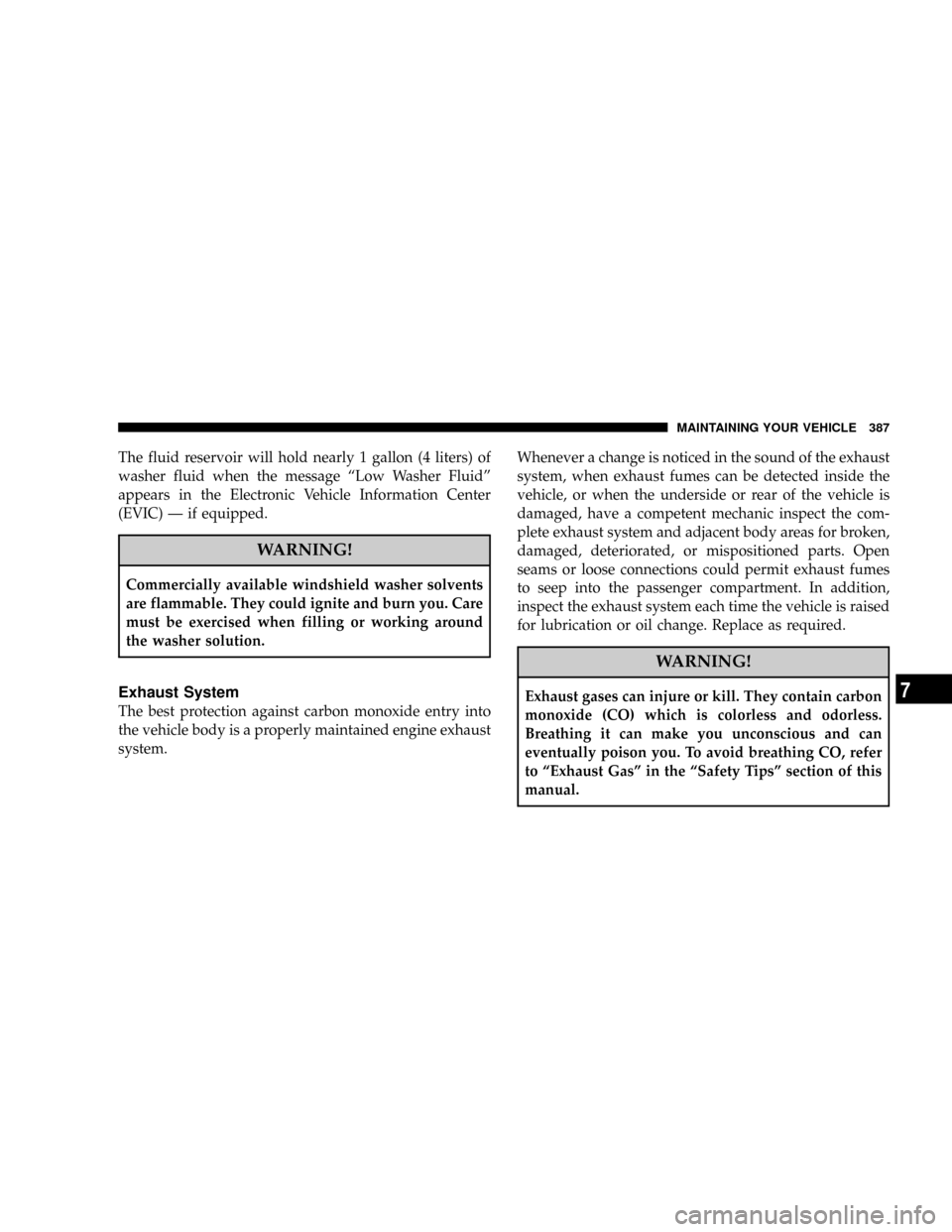washer fluid DODGE CHARGER 2008 6.G Owners Manual
[x] Cancel search | Manufacturer: DODGE, Model Year: 2008, Model line: CHARGER, Model: DODGE CHARGER 2008 6.GPages: 466, PDF Size: 6.37 MB
Page 81 of 466

NMist Feature.........................131
NWindshield Washers...................131
NHeadlights On With Wipers (Available With
Auto Headlights Only).................131
NAdding Washer Fluid..................132
mTilt/Telescoping Steering Column...........133
mAdjustable Pedals Ð If Equipped...........134
mElectronic Speed Control..................135
NElectronic Speed Control Operation........135
NTo Activate..........................136
NTo Set At A Desired Speed...............136
NTo Deactivate........................136
NTo Resume Speed.....................137NTo Vary The Speed Setting...............137
NTo Accelerate For Passing...............137
mOverhead Console......................138
NCourtesy/Reading Lights................139
NSunglasses Storage....................139
mGarage Door Opener Ð If Equipped.........139
NProgramming HomeLinkt...............140
NGate Operator/Canadian Programming.....143
NUsing HomeLinkt.....................144
NReprogramming a Single HomeLinktButton . . 144
NSecurity............................144
NTroubleshooting Tips...................145
NGeneral Information...................145
UNDERSTANDING THE FEATURES OF YOUR VEHICLE 81
3
Page 132 of 466

The Headlights On with Wipers feature can be turned on
or off through the Electronic Vehicle Information Center
(EVIC) Ð if equipped. For details, refer to ºHeadlights
On with Wipers,º under ªPersonal Settings (Customer
Programmable Features),º under ªElectronic Vehicle In-
formation Centerº in Section 4 of this manual.
Adding Washer Fluid
The windshield washer fluid reservoir is located in the
front of the engine compartment. Be sure to check the
fluid level in the reservoir at regular intervals. Fill the
reservoir with windshield washer solvent (not radiator
antifreeze) and operate the system for a few seconds to
flush out the residual water.
The fluid reservoir will hold nearly 1 gallon (4 liters) of
washer fluid when the message ªLow Washer Fluidº
appears in the Electronic Vehicle Information Center
(EVIC) Ð if equipped.
Washer Fluid Reservoir
132 UNDERSTANDING THE FEATURES OF YOUR VEHICLE
Page 177 of 466

Electronic Vehicle Information Center (EVIC)
Displays
When the appropriate conditions exist, the Electronic
Vehicle Information Center (EVIC) displays the following
messages:
²Turn Signal On (with a continuous warning chime if
the vehicle is driven more than 1 mile [1.6 km] with
either turn signal on)
²Left Front Turn Signal Light Out (with a single chime)
²Left Rear Turn Signal Light Out (with a single chime)
²Right Front Turn Signal Light Out (with a single
chime)
²Right Rear Turn Signal Light Out (with a single chime)
²RKE Battery Low (with a single chime)
²Personal Settings Not Available ± Vehicle Not in Park
²Left/Right Front Door Ajar (one or more, with a single
chime if speed is above 1 mph [1.6 km])
²Left/Right Rear Door Ajar (one or more, with a single
chime if speed is above 1 mph [1.6 km])
²Door(s) Ajar (with a single chime if vehicle is in
motion)
²Trunk Ajar (with a single chime)
²Low Washer Fluid (with a single chime)
²Channel # Transmit
²Channel # Training
²Channel # Trained
²Clearing Channels
²Channels Cleared
²Did Not Train
UNDERSTANDING YOUR INSTRUMENT PANEL 177
4
Page 364 of 466

NMaintenance-Free Battery................381
NAir Conditioner Maintenance.............383
NA/C Air Filter Ð If Equipped............384
NPower Steering Ð Fluid Check............384
NFront & Rear Suspension Ball Joints........385
NSteering Linkage......................385
NBody Lubrication.....................385
NWindshield Wiper Blades................386
NWindshield Washers...................386
NExhaust System......................387
NCooling System.......................388
NHoses And Vacuum/Vapor Harnesses.......393
NFuel System.........................393NBrake System........................394
NAutomatic Transmission................396
NAll Wheel Drive (AWD) Ð If Equipped.....398
NFront And Rear Wheel Bearings...........398
NAppearance Care And Protection From
Corrosion...........................398
NCleaning The Center Console Cup Holders . . . 403
mFuses (Power Distribution Centers)..........404
NFuses (Front Power Distribution Center).....404
NFuses (Rear Power Distribution Center)......406
mVehicle Storage........................411
mReplacement Light Bulbs.................412
mBulb Replacement......................413
364 MAINTAINING YOUR VEHICLE
Page 366 of 466

2.7L ENGINE COMPARTMENT
1 Ð Fuses (Front Power Distribution Center) 6 Ð Air Cleaner Filter
2 Ð Engine Oil Dipstick 7 Ð Coolant Pressure Cap
3 Ð Brake Fluid Reservoir Access Cover 8 Ð Engine Oil Fill
4 Ð Coolant Bottle 9 Ð Remote Jump-Start Positive Battery Post
5 Ð Power Steering Fluid 10 Ð Washer Fluid Bottle 366 MAINTAINING YOUR VEHICLE
Page 367 of 466

3.5L ENGINE COMPARTMENT
1 Ð Fuses (Front Power Distribution Center) 6 Ð Coolant Bottle
2 Ð Air Cleaner Filter 7 Ð Engine Oil Fill
3 Ð Brake Fluid Reservoir Access Cover 8 Ð Engine Oil Dipstick
4 Ð Coolant Pressure Cap 9 Ð Washer Fluid Bottle
5 Ð Power Steering Fluid 10 Ð Remote Jump-Start Positive Battery PostMAINTAINING YOUR VEHICLE 367
7
Page 368 of 466

5.7L ENGINE COMPARTMENT Ð EXCEPT DAYTONA & R/T
1 Ð Fuses (Front Power Distribution Center) 6 Ð Air Cleaner Filter
2 Ð Coolant Pressure Cap 7 Ð Engine Oil Fill
3 Ð Brake Fluid Reservoir Access Cover 8 Ð Engine Oil Dipstick
4 Ð Coolant Bottle 9 Ð Remote Jump-Start Positive Battery Post
5 Ð Power Steering Fluid 10 Ð Washer Fluid Bottle 368 MAINTAINING YOUR VEHICLE
Page 369 of 466

5.7L ENGINE COMPARTMENT Ð DAYTONA & R/T
1 Ð Fuses (Front Power Distribution Center) 6 Ð Air Cleaner Filter
2 Ð Coolant Pressure Cap 7 Ð Engine Oil Fill
3 Ð Brake Fluid Reservoir Access Cover 8 Ð Engine Oil Dipstick
4 Ð Coolant Bottle 9 Ð Remote Jump-Start Positive Battery Post
5 Ð Power Steering Fluid 10 Ð Washer Fluid BottleMAINTAINING YOUR VEHICLE 369
7
Page 386 of 466

The external lock cylinders should be lubricated twice a
year, preferably in the fall and spring. Apply a small
amount of a high quality lubricant such as MopartLock
Cylinder Lubricant or equivalent directly into the lock
cylinder.
Windshield Wiper Blades
The rubber edges of the wiper blades and the windshield
should be cleaned periodically with a sponge or soft cloth
and a mild nonabrasive cleaner. This will remove accu-
mulations of salt or road film.
Operation of the wipers on dry glass for long periods
may cause deterioration of the wiper blades. Always use
washer fluid when using the wipers to remove salt or dirt
from a dry windshield.
Avoid using the wiper blades to remove frost or ice from
the windshield. Keep the blade rubber out of contact with
petroleum products such as engine oil, gasoline, etc.
Windshield Washers
The windshield washer fluid reservoir is located in the
front of the engine compartment. Be sure to check the
fluid level at regular intervals. Fill the reservoir with
windshield washer solvent (not radiator antifreeze) and
operate the system for a few seconds to flush out the
residual water.
When refilling the washer fluid reservoir, take some
washer fluid and apply it to a cloth or towel and wipe
clean the wiper blades, this will help blade performance.
To prevent freeze-up of your windshield washer system
in cold weather, select a solution or mixture that meets or
exceeds the temperature range of your climate. This
rating information can be found on most washer fluid
containers.
386 MAINTAINING YOUR VEHICLE
Page 387 of 466

The fluid reservoir will hold nearly 1 gallon (4 liters) of
washer fluid when the message ªLow Washer Fluidº
appears in the Electronic Vehicle Information Center
(EVIC) Ð if equipped.
WARNING!
Commercially available windshield washer solvents
are flammable. They could ignite and burn you. Care
must be exercised when filling or working around
the washer solution.
Exhaust System
The best protection against carbon monoxide entry into
the vehicle body is a properly maintained engine exhaust
system.Whenever a change is noticed in the sound of the exhaust
system, when exhaust fumes can be detected inside the
vehicle, or when the underside or rear of the vehicle is
damaged, have a competent mechanic inspect the com-
plete exhaust system and adjacent body areas for broken,
damaged, deteriorated, or mispositioned parts. Open
seams or loose connections could permit exhaust fumes
to seep into the passenger compartment. In addition,
inspect the exhaust system each time the vehicle is raised
for lubrication or oil change. Replace as required.
WARNING!
Exhaust gases can injure or kill. They contain carbon
monoxide (CO) which is colorless and odorless.
Breathing it can make you unconscious and can
eventually poison you. To avoid breathing CO, refer
to ªExhaust Gasº in the ªSafety Tipsº section of this
manual.
MAINTAINING YOUR VEHICLE 387
7